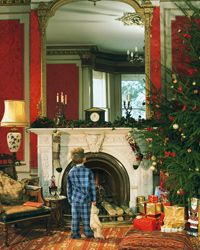You'll need to know where the studs are located in your walls to hang heavy pictures or put up new shelves. Only the heavier, thicker wooden studs behind the relatively light, thin plaster of the walls can bear the weight of something heavy like a big plasma TV. But short of having X-ray vision, finding exactly where the studs are located can be quite tricky. This challenge continues to baffle both professional carpenters and do-it-yourselfers. You can knock on the wall at intervals because the wall in between the studs will sound hollow, and the knock on the studs themselves will sound higher-pitched; however, this isn't a very reliable system, though many consider it tried and true.
Electronic stud finders are generally inexpensive, but many people complain that that they're semi-useful at best and useless at worst (especially in older houses). In many cases, the textures on the plaster wall and the junk (cables, wires, etc.) within the wall confuse the sensors on electric stud finders. Some experts suggest that homemade stud finders using a simple refrigerator magnet -- attracted to the nails and other hardware that connects the studs to the plaster -- and a piece of string produce remarkably accurate results.
Advertisement
To make your own magnetic stud finder, simply tie a piece of string to a regular fridge magnet, or a stronger, light rare-earth magnet. Allow the magnet to dangle along your plaster walls. Your magnet will reveal where the nails and screws are situated beneath the plaster. Marking the location of the nails and screws will reveal exactly where the studs are located.
